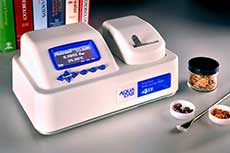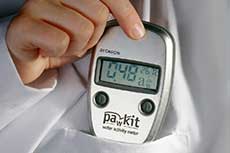Meats and Sausages
Drying Food
More fruits and vegetables are preserved by drying than by any other methods. Grains, beans, peas, nuts, fruits, all those foods are preserved by drying. Certain grains and fruits depend on the warm wind to dry naturally in the fields, others are commercially dried in machine and the process of artificial drying has taken the meaning of “dehydration."
Evidence shows that vegetables and fruits were dried from the earliest times. The Romans were particularly fond of any dried fruit they could make; American Indians used the heat from fire to dry foods. In the Middle Ages purposely built “still houses” were created to dry fruits, vegetables and herbs in areas that did not have enough strong sunlight for drying. A fire was used to create the heat needed to dry foods and in some cases smoking them as well. Meat was dried in such houses by burning small fire, and the product was dried with “smoke” what gave the meaning to “cold smoking.”
Artificial drying (dehydrating) took off in about 1795 when French inventors Chalet and Mason designed the first hot air food dehydrator. A short time later in 1810, another Frenchman, Nicholas Appert received from Napoleon Bonaparte the reward of 12,000 francs for inventing canning process. Those two new technologies, dehydrating and canning, started a new era in food preservation. Although scientists of the day were not able to explain those new technologies, nevertheless the processes worked well and not the nature, but the man was finally in full control.
The water content of food is usually very high, typically 80% to 95% for various fruits and vegetables and 50% to 75% for various meats. The water content of thoroughly dried foods is around 10-20%. There are three types of drying:
- Sun drying
- Solar drying
- Dehydration
- Freeze drying. Freeze drying works by freezing the material and then reducing the surrounding pressure to allow the frozen water in the material tosublimate (evaporate) directly from the solid phase to the gas phase. Freeze-drying does not usually cause shrinkage or toughening of the materialand flavors, smells and nutritional content generally remain unchanged, making the process popular for preserving food. This is a purely commercial method requiring substantial investment in equipment.
Principles of Food Drying
Drying can be defined as removing water from the food to air. In solar drying the airescapes to the atmosphere, in a dehydrator, the moist air is sucked out of the dryer by a fan. Water in food must be heated before it evaporates and that requires energy. In solar drying the sun provides the heat, in a dehydrator the electricity heats up the air and the fan moves it around.
As the temperature rises, the vapor pressure of the water increases until water molecules break free and evaporate from the surface of the food. As this surface water is removed, it is replaced with water from deeper within the food. Air conveysheat to the food and air removes moisture vapor from the dehydrating food.
Bound and Unbound Water
In foods water is present as free water and bound water. The unbound (free) water is within the pores and spaces between plant cells and is easy to remove. Bound water is locked within cells and much more energy must be applied to remove it.
Adding salt. Adding salt contributes positively to removal of the moisture. Sprinklingsalt over sliced tomatoes immediately draws the moisture out. In meats, for example jerky, it removes moisture and provides safety against growth of bacteria. Even if salt is not sprinkled over meat, it is still there, as most jerkies are marinated and the marinade contains salty liquids like soy sauce.
Adding sugar. Sugar draws easily moisture from the fruit and binds free water. Fruits for jams are often mixed with sugar and left for a few hours to draw the juice out. Then, they can be cooked for shorter time.
Applying salt and sugar will not free the bound water.
Successful Drying
The drying process depends on:
- Applying enough heat to remove moisture, without cooking the food.
- Having an adequate air circulation to carry off the moisture.
Factors that Influence Drying
- The greater the surface area and the more porous the surface - the faster the drying rate.
- The greater the velocity of air flowing over food - the faster the drying rate.
- The higher the temperature of air - the faster the drying rate.
- The lower humidity of air - the faster the drying rate.
A thicker food requires more time to dry out. Take for example Chorizo sausage which like other sausages is drying from inside out. The length of the sausage does not affect the drying time, but the diameter does. A larger diameter sausage needs more time to dry out.
Fruit is sliced thin to shorten time and make drying process safer. Fruit leathers are spread to 1/8 inch thickness, beef jerky is sliced to ¼ inch thickness, tomatoes and other fruits are sliced thin. Some fruit, for example plums, apricots, raisings are dried whole, other fruit like mangos or papayas are dried as chunks. Adding salt to sweet fruits is not practiced as it will affect their flavor, however, fruits are acidic and acidity keeps bacteria in check.
Native Indians did not know salt so meats were dried in air or over fire, however those meats were thinly sliced. Eskimos dried meat and fish in air at very low temperatures, what helped was the windy weather. Low temperatures inhibited growth of bacteria.
Case Hardening
Well balanced drying takes place when the amount of evaporated water from the surface is replaced by an equal amount of water from inside.
The equilibrium state: diffusion rate = evaporation rate
When moisture from the surface of food is being removed more rapidly than water can diffuse from the moist interior of the food, a hardening of the outer surface maydevelop. This usually happens at low humidity and fast air flow. This hardened surface will retard the free diffusion of the interior water. As a result, moist interior becomes susceptible to microbial spoilage. This is a common problem for traditionally made slow dried salami. The problem is prevented by controlling the humidity and the temperature of the circulating air, and the speed of the air flow. For this reason home food drying instructions start at a low setting. To slow down the removal of moisture at the beginning of fermentation, meats are usually fermented at very high humidity setting (90-95%) with very slow air flow. Foods are more exposed to case hardening at the beginning of the drying process when they contain all moisture.
Water Activity
We know that bacteria need water and any moist food is at risk of being spoiled. Can we draw a conclusion that the wetter the food the faster it will spoil? Not so, there is more to it... A potato starch may contain 20% of moisture and be stable, butsugar with 4% moisture content may spoil.
It is the availability of unbound (free) water, not the actual water content, that determines perishability.
In 1953, the new term water activity Aw was created to better define relationship between unbound water and food spoilage. Water activity is an indication of how tightly water is "bound" inside of a product. It does not say how much water is there, but how much is available to support the growth of microorganisms. Adding salt or sugar "binds" some of this free water inside of the product and lowers the amount of available water to bacteria. This is why we add so much sugar to jams, to immobilize free water. Sugar steals available water and holds it so tight that bacteria cannot use it. The following statement describes the importance of water activity (Aw).
Below certain Aw levels, microbes cannot grow.
USDA guidelines state:
"A potentially hazardous food does not include... a food with a WATER ACTIVITY value of 0.85 or less."
All we need to do is to test dry food for Aw in order to determine its safety.
| Water activity (Aw) of some foods | |
|---|---|
| Pure water | 1.00 |
| Fresh meat & fish | 0.99 |
| Bread | 0.99 |
| Salami | 0.87 |
| Aged cheese | 0.85 |
| Jams & jellies | 0.80 |
| Plum pudding | 0.80 |
| Dried fruits | 0.60 |
| Biscuits | 0.30 |
| Milk powder | 0.20 |
| Instant coffee | 0.20 |
| Bone dry | 0.00 |
| Minimum Aw requirements for microorganism growth | |
|---|---|
| Molds | 0.75 |
| Staphylococcus aureus | 0.85 |
| Yeasts | 0.88 |
| Listeria | 0.92 |
| Salmonella | 0.93 |
| Cl. botulinum | 0.93 |
| E.coli | 0.95 |
| Campylobacter | 0.98 |
Water Activity Meters
There are a number of devices that can measure water activity. The leader in this field is Decagon Devices Inc.















